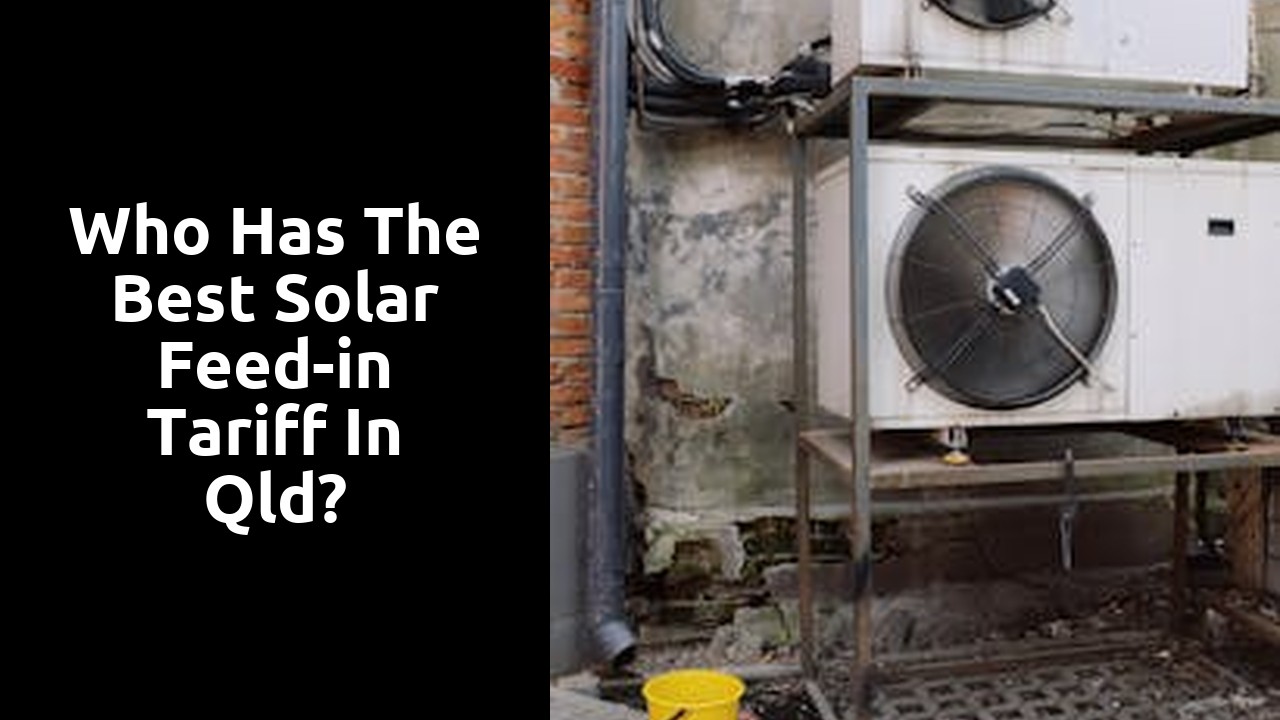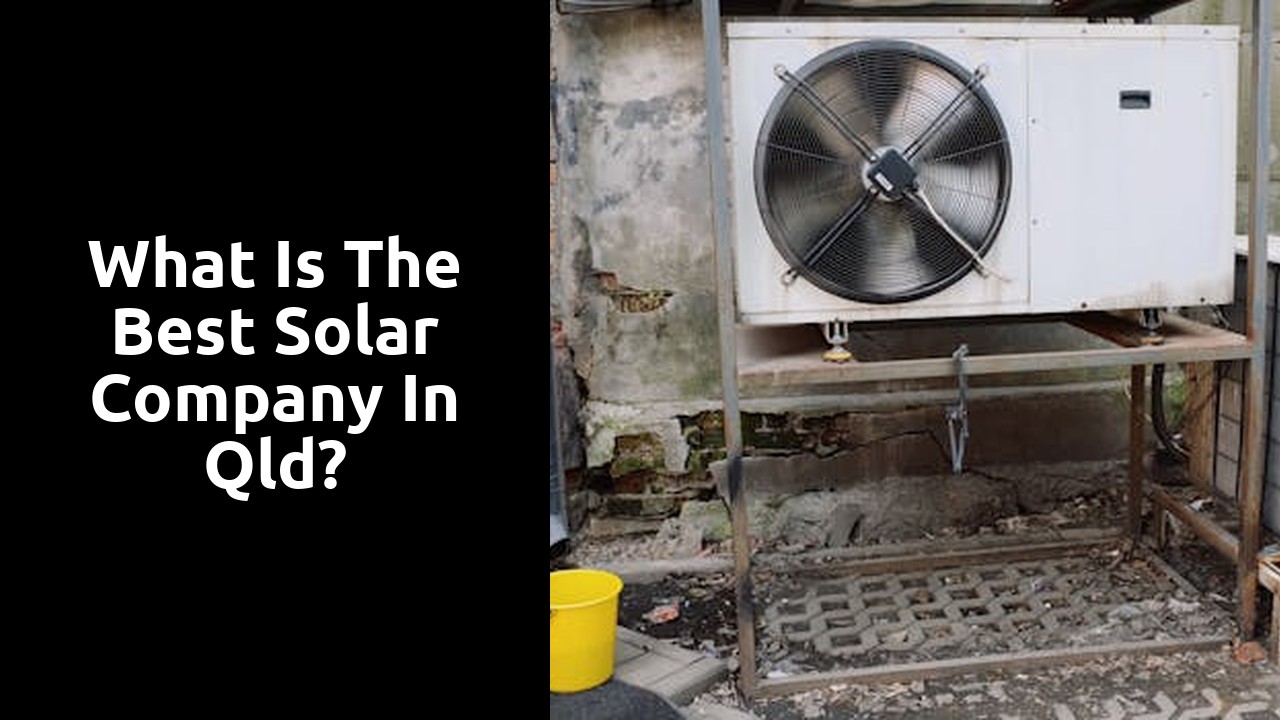
Common Misconceptions About Solar FeedIn Tariffs
One common misconception about solar feed-in tariffs in Queensland is that they are the same across all energy retailers. In reality, different retailers offer varying rates for the excess electricity generated by your solar panel system. It's crucial for homeowners to compare the feed-in tariff rates from different retailers to ensure they are getting the best return on their investment. Consulting with a professional in Solar Panel System Performance Consulting can help clarify the differences and guide you in selecting the most beneficial option for your specific circumstances.
Another myth surrounding solar feed-in tariffs is that having a larger solar panel system means you will always receive higher payments. While a larger system can potentially generate more electricity, the tariff rate offered by your energy retailer plays a significant role in how much you earn from feeding excess power back into the grid. Opting for a more expensive solar panel system does not automatically translate to higher financial returns through feed-in tariffs. To make informed decisions about solar investments and maximize your returns, seek advice from experts in Solar Panel System Performance Consulting to debunk such misconceptions and optimize the financial benefits of your solar energy system.
Addressing Misinformation and Myths
Addressing misinformation and myths surrounding solar feed-in tariffs is crucial in ensuring consumers have accurate information to make informed decisions. Some misconceptions suggest that solar feed-in tariffs are no longer a worthwhile investment due to changes in government policies. However, it is vital to note that various factors, including the size of the solar panel system and the energy consumption habits of the household, can influence the benefits of feed-in tariffs. Seeking professional advice from experts in Solar Panel System Performance Consulting can provide clarity on how feed-in tariffs can still be advantageous for Queensland residents.
Another common myth is that solar feed-in tariffs are complex and not worth the effort to understand. In reality, while the structure of tariffs may have some intricacies, many resources are available to help consumers comprehend the process. Government websites, energy providers, and consulting services specialising in Solar Panel System Performance Consulting offer valuable information and guidance to simplify the concept of feed-in tariffs. By dispelling these myths and providing accurate information, consumers can make educated decisions regarding their solar energy investments.
Government Support and Incentives for Solar FeedIn Tariffs
Government support and incentives play a crucial role in promoting the adoption of solar energy systems in Queensland. The government offers various rebate schemes and financial assistance programs to encourage households and businesses to invest in solar panels. These incentives not only help offset the upfront costs of installing solar panels but also contribute to reducing electricity bills in the long run. Additionally, the government provides grants for research and development in solar technology, aiming to improve Solar Panel System Performance Consulting across the state.
Furthermore, Queensland's government is committed to supporting renewable energy initiatives, including solar feed-in tariffs. Through these tariffs, solar panel owners can earn credits for the excess electricity they feed back into the grid. This incentive not only incentivizes grid-connected solar systems but also promotes energy self-sufficiency and sustainability. By offering competitive feed-in tariff rates, the government aims to drive the growth of the solar energy sector in Queensland, paving the way for a cleaner and greener future.
Exploring Rebates and Assistance Programs
When considering the financial aspects of installing a solar panel system in Queensland, it's crucial to look into the various rebates and assistance programs that are available. These incentives can significantly reduce the upfront costs of going solar and help make the investment more financially viable for households and businesses. By taking advantage of these programs, many Queenslanders have been able to access affordable renewable energy solutions and contribute to a more sustainable future. Consulting with experts in Solar Panel System Performance Consulting can assist in understanding the full range of benefits and incentives that are available and how to maximize savings.
In addition to governmental support, some energy retailers in Queensland offer additional rebates or feed-in tariffs to customers who have solar panel systems installed. These programs aim to encourage more people to invest in renewable energy and help contribute to a greener and more sustainable energy grid. By exploring these options and understanding the potential cost savings and benefits, individuals and businesses can make informed decisions about their solar energy investments. Partnering with experts in Solar Panel System Performance Consulting can provide valuable insights into the best programs available based on specific needs and circumstances.
The Future of Solar FeedIn Tariffs in Queensland
The future of solar feed-in tariffs in Queensland looks promising as advancements in technology continue to make solar energy more efficient and cost-effective. With more households and businesses installing solar panel systems, there is a growing demand for Solar Panel System Performance Consulting to ensure maximum efficiency and savings. This increasing interest in renewable energy sources is driving the need for innovative solutions and competitive feed-in tariff rates to encourage further adoption across the state.
As the government continues to support the transition to renewable energy, we can expect to see more incentives and assistance programs aimed at making solar power accessible to a wider range of consumers. By staying informed about the latest developments and opportunities in solar feed-in tariffs, residents of Queensland can better navigate the changing landscape of energy pricing and take advantage of potential savings. With ongoing advancements in technology and government support, the future of solar feed-in tariffs in Queensland holds great potential for both consumers and the environment.
Predictions and Trends in Solar Energy Tariffs
Looking ahead, the future of solar energy tariffs in Queensland is poised for notable advancements. With a growing emphasis on sustainability and renewable energy sources, there is a strong likelihood that feed-in tariffs will become more competitive and equitable. Innovations in solar technology, coupled with increased government support and incentives, are expected to drive further adoption of solar panel systems across the region. This shift towards a more solar-friendly environment may also open up opportunities for individuals and businesses to engage in Solar Panel System Performance Consulting, ensuring optimal efficiency and returns on their investments in solar energy. As customer demands evolve and technology improves, we can anticipate continued growth and evolution in the solar energy market, shaping the landscape for feed-in tariffs in the coming years.
FAQS
How do I determine who has the best solar feed-in tariff in Queensland?
To determine the best solar feed-in tariff in Queensland, you should compare various energy providers and their tariff rates, taking into consideration any additional incentives or benefits they offer. ####
Are all solar feed-in tariffs the same across providers in Queensland?
No, solar feed-in tariffs can vary between different energy providers in Queensland. It's essential to compare the rates and terms offered by each provider to find the best option for your needs. ####
What are some common misconceptions about solar feed-in tariffs?
Common misconceptions about solar feed-in tariffs include the belief that all providers offer the same rates, or that the highest tariff rate is always the best option. It's important to do thorough research to separate fact from fiction. ####
How can I distinguish between misinformation and facts regarding solar feed-in tariffs?
To address misinformation and myths about solar feed-in tariffs, rely on reputable sources such as government websites, industry publications, and official announcements from energy providers. Fact-checking is crucial in making informed decisions. ####
What government support and incentives are available for solar feed-in tariffs in Queensland?
The Queensland government offers various rebates and assistance programs to support solar energy initiatives, which can include feed-in tariff schemes, grants, and concessions. It's advisable to check with relevant government departments for the latest information. ####
How can I explore rebates and assistance programs related to solar feed-in tariffs?
You can explore available rebates and assistance programs by visiting the official websites of government agencies responsible for energy and environmental initiatives in Queensland. These platforms often provide details on eligibility criteria and application processes. ####
What is the future outlook for solar feed-in tariffs in Queensland?
Predictions and trends in solar energy tariffs suggest a continued shift towards more sustainable and competitive pricing structures. Innovations in technology and policy changes are likely to shape the future landscape of solar feed-in tariffs in Queensland. ####
How can I stay informed about the latest developments in solar feed-in tariffs in Queensland?
To stay informed about the latest developments in solar feed-in tariffs in Queensland, follow updates from energy regulators, industry associations, and government bodies. Subscribing to newsletters or attending relevant events can also help you stay up-to-date.
